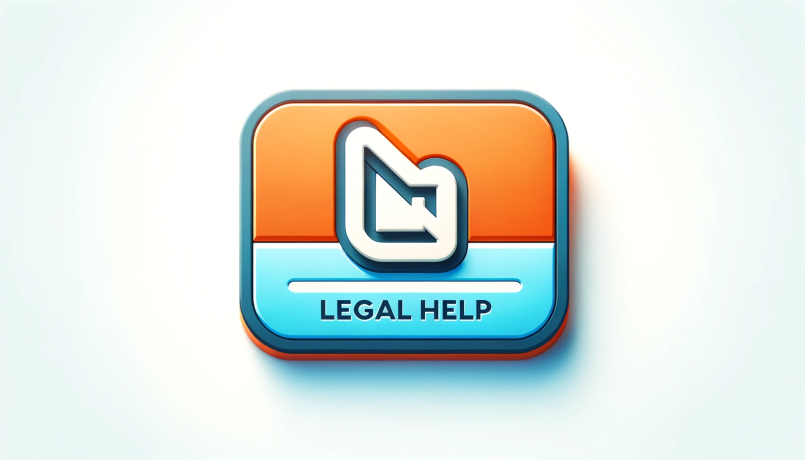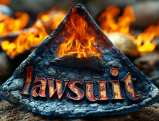
Injured in a slip and fall accident in Los Angeles? Follow these crucial legal steps to protect your rights and seek fair compensation. From documenting the scene to consulting with an attorney, ensure you take the right actions for your recovery and legal case.
by LawInc Staff
May 31, 2024
Experiencing a sudden slip and fall accident in L.A. can inflict serious physical injuries, emotional trauma and financial hardships. Knowing precisely what steps to take in the accident’s immediate aftermath proves pivotal to protecting your health, legal rights and ability to secure just compensation for the full scope of harm suffered.
This guide details 10 critical actions to take without delay if you find yourself the victim of a Los Angeles slip, trip or fall incident. We explain how to document the scene, notify appropriate parties, access proper medical care and more to best position your case should litigation later prove necessary to fairly resolve your claim.
1. Seek Immediate Medical Attention
-
- Call 911 for Severe Injuries: Request emergency transport for urgent trauma care.
- Visit Urgent Care or Your Doctor: Get less critical injuries promptly diagnosed and treated.
- Follow All Treatment Recommendations: Attend follow-ups, therapy and take medications as directed.
- Save All Medical Documentation: Organize charts, bills, referrals and disability notes.
- Track Recovery and Limitations: Keep a detailed record of your healing process, noting any ongoing pain, limitations, or changes in your daily life.
Examples:
-
- Paramedics rushed Janice to the ER after she lost consciousness following her grocery store fall.
- David had his swollen ankle x-rayed at urgent care the evening of his apartment stairwell stumble.
- Maria diligently did the daily at-home exercises her physical therapist prescribed to regain mobility.
- Carlos filed his hospital bills and primary care follow-up notes in a dedicated folder.
- In a journal, Lisa detailed how her back pain since the fall impacted daily activities and sleep.
How to Proceed:
-
- Get checked out right away even if you feel okay – some injuries worsen over time.
- See your regular doctor soon after ER or urgent care visits to ensure continuity of care.
- Attend all ordered imaging, procedures and therapy appointments to properly heal.
- Save documentation in an organized folder or binder for easy access if needed for your case.
- Note mobility issues, pain levels, emotional impacts and effects on work and home life.
FAQs:
-
- What if I can’t afford treatment? Your health insurance should cover care, but tell providers you plan to file an injury claim and discuss payment plan options.
- Do I need to see a specialist? Quite possibly – get your primary doctor’s opinion and always follow specialist referrals to ensure proper care.
- How long will treatment take? Varies case by case but may span months or years for serious injuries – don’t rush or neglect care.
- What if I miss work during treatment? Track all missed days and lost pay – an injury claim can seek to recover these amounts.
- Will my health insurer want reimbursement? Likely yes if your claim succeeds – your attorney can negotiate this to maximize your net recovery.
2. Report the Incident to the Property Owner or Manager
-
- Notify Responsible Parties: Immediately alert the supervisor, manager, owner, landlord, business or property manager.
- Submit a Written Report: Insist on creating and signing an official incident report.
- Get a Copy: Request your own copy of the report for your records before leaving.
- Note Any Admissions: Document if they acknowledge a hazard or defer blame.
- Stay Succinct: Avoid embellishing or speculating about fault at this stage.
Examples:
-
- Tim alerted the store manager on duty about his fall near the produce section.
- The manager filled out an incident report which Brenda reviewed and signed.
- Frank obtained his own copy of the report the restaurant created about his tumble.
- On the report, Susan quoted the manager as saying “That broken tile has been a problem.”
- Marcus kept his report factual, without guessing what caused him to slip.
How to Proceed:
-
- Locate the manager or supervisor before leaving the premises if possible.
- Ask to file a formal written incident report – follow up in writing if they delay.
- Snap a photo of the report with your phone in case your copy is misplaced.
- Include any verbatim statements from staff about the hazard or incident.
- Focus on known facts like date, time, location, injuries – not opinions on fault.
FAQs:
-
- What if the owner or manager is unavailable? Report it to the highest-ranking employee present, obtain their name and contact information, and follow up with management in writing as soon as possible.
- Must the report be written? Ideally yes, but if they insist on verbal only, note the details of your conversation.
- What if they won’t let me file a report? Formally request it in writing via email and certified letter – their refusal can actually help your case.
- Should I threaten a lawsuit when reporting it? No, remain calm and factual – aggressive threats can backfire.
- Will reporting help my case? Yes, it documents key details and may contain useful admissions of fault or hazards.
3. Document Everything About the Incident
-
- Take Photos of the Scene: Capture images of the hazard and surrounding area from multiple angles.
- Photograph Your Injuries: Take pictures of bruises, cuts, casts and other visual signs of harm.
- Save Key Evidence: Preserve torn or bloodied clothing, broken shoes, etc in a safe place.
- Write a Detailed Narrative: As soon as you can, write out everything you remember about the incident.
- Note Any Witnesses: Get names and contact info of any witnesses for potential statements.
Examples:
-
- Manuel used his phone to photograph the puddle he slipped on from various distances and angles.
- In the ER, Kim’s husband took pictures of the gash on her forehead and her broken wrist.
- Ellen saved the pants she was wearing during the fall, torn and stained from the incident.
- The next morning, Jeff wrote a 3-page summary of everything he recalled before, during and after his fall.
- Sandy obtained the name and email of a fellow shopper who saw her tumble to the floor.
How to Proceed:
-
- Focus photos on the specific condition that caused your fall – get close-ups and wider shots.
- Take injury photos right away and as bruises or symptoms develop in the following days.
- Place any key physical evidence in a labeled bag – don’t wash or throw away.
- Write your summary with an emphasis on facts – limit opinions and speculation.
- Approach witnesses yourself if you can – if not, ask someone with you to help.
FAQs:
-
- What if the hazard has been cleaned up? Still take photos of the area – note any signs of clean-up like mop buckets or wet floor signs.
- Should I photograph my injuries if they are hard to see? Yes, some injuries worsen over time – document them at all stages.
- What if I think of new details later? Add them to your existing summary with the current date to show when you remembered them.
- Is a handwritten or typed summary better? Either works – typing may be easier to organize and share with your lawyer.
- What if witnesses won’t talk to me? Don’t press them – just pass along whatever info you have to your attorney to follow up.

Were you or a loved one injured in a slip and fall accident in Los Angeles? Get legal help right away!
4. Be Cautious When Discussing the Incident
-
- Don’t Admit or Assign Fault: Avoid statements like “It was my fault” or “You should have known”.
- Limit Incident Discussion: Keep conversations about what happened brief and factual.
- Avoid Social Media Posts: Don’t mention or allude to the incident on any social media platforms.
- Use Caution with Insurance: Politely decline to give statements to, or sign any documents from, insurers until you’ve consulted an attorney.
- Never Accept Quick Settlements: Refuse any fast initial settlement offers from insurance companies.
Examples:
-
- Despite frustrations, Jacob refrained from lashing out at store managers accusing them of negligence.
- Erica limited her incident conversations to what, when and where it occurred – not why or how.
- Resisting an urge to vent, Paul avoided mentioning his injury or the business on his Facebook page.
- When the store’s insurer called, Miranda politely said she needed to consult her lawyer before giving a statement.
- Though tempted by a fast $5,000 offer, Darrell told the claims rep he needed to wait before accepting anything.
How to Proceed:
-
- Pause before making statements – it’s natural to want to assign blame but best not to.
- Change the subject or walk away if pressed for details you’re unsure about sharing.
- Adjust social media settings to private and refrain from any posts about your incident or injury.
- Screen calls and send unknown numbers to voicemail to avoid being caught off guard by insurance reps.
- Remember: you can always come back and negotiate more later, but you can never take back statements or go lower after settling.
FAQs:
-
- Why does fault matter if I know they are to blame? Liability disputes arise often – it’s best to avoid giving any ammunition to the other side.
- I just want to explain what happened – why not? Details get misconstrued easily or taken out of context – it’s safer to stay general for now.
- What if I already posted on social media? Delete any posts, photos or videos related to your incident or injury – even if seemingly harmless.
- Shouldn’t I cooperate with insurance? You may have to eventually, but it’s best to have a lawyer’s counsel first to protect your rights.
- How do I know if a settlement offer is fair? You likely can’t this early on – best to wait until you complete treatment and consult an attorney.
5. Consult with an Experienced Slip and Fall Attorney
-
- Research Qualified Lawyers: Look for attorneys specializing in plaintiff personal injury cases.
- Read Reviews and Client Testimonials: See what past clients say about their skills and service.
- Check Disciplinary Histories: Verify the attorney has no malpractice or sanctions on their record.
- Schedule Consultations: Most slip and fall attorneys offer free initial meetings to hear your story.
- Ask About Experience and Approach: Make sure their philosophy and experience align with your needs.
Examples:
-
- Jason searched online for “Los Angeles slip and fall lawyers” and browsed firm websites for relevant experience.
- Impressed by glowing reviews, Maggie felt confident reaching out to set up a consultation.
- Before hiring, Peter checked the state bar website to confirm the lawyer had no prior discipline.
- During her free consultation, Gina shared how the incident had impacted her life physically, emotionally and financially.
- Carlos asked about the attorney’s approach and felt encouraged by their personal commitment to each case.
How to Proceed:
-
- Prioritize attorneys who specialize in premises liability and personal injury for plaintiffs – not general practitioners.
- See if any people you trust have referrals, then cross-reference with online reviews on legal sites and Google.
- Check state bar websites for public disciplinary records – all ethics violations or malpractice should be disclosed there.
- Take advantage of free consultations – bring your evidence and questions, and treat it like an interview to make sure it’s a good fit.
- Ask how many similar cases they’ve handled, what outcomes they secured, and what strategy they envision for your unique situation.
FAQs:
-
- Why do I need an attorney? Investigating and proving a premises liability case requires specific expertise – an attorney protects your rights from start to finish.
- How much does hiring a slip and fall lawyer cost? Most work on contingency, collecting a percentage fee only if you win – meaning no upfront costs.
- What if I can’t afford an attorney? Since contingency fees are standard, everyone can access representation regardless of financial status.
- Will my case definitely go to trial? No, many valid cases settle favorably out of court – but the threat of trial enhances your bargaining power.
- What if the first lawyer I meet doesn’t feel right? It’s okay to consult with multiple attorneys to find the best advocate you feel most comfortable with.
6. Begin Investigating Key Evidence
-
- Identify Eyewitnesses: Reach out to any independent eyewitnesses for statements supporting your side.
- Preserve Video Footage: Notify the property owner and/or manager of the incident and request that they preserve any surveillance or cell phone videos that may have captured the incident. If they refuse, your attorney can send a preservation letter or, if necessary, subpoena the footage.
- Document the Scene: Photograph or videotape the area where you fell in detail from every angle.
- Research Prior Incidents: Investigate if similar falls or hazards occurred there previously.
- Obtain Critical Records: Gather your medical records, bills, incident reports and insurance policies.
Examples:
-
- Rachel’s attorney tracked down a customer who had seen her fall and provided a sworn affidavit.
- The grocery store had 60 days of video saved – Liam’s lawyer sent a spoliation letter to preserve it before filing suit.
- An investigator visited the scene a week later and noted the hazard still hadn’t been repaired as Denise fell again in the same spot.
- County records showed multiple code violations for the broken steps outside the store where Julia tumbled.
- Amir provided his attorney all his treatment records, Kaiser insurance forms, and wage loss information.
How to Proceed:
-
- Tell your lawyer about any witnesses so they can reach out – written or recorded statements are best when memories are fresh.
- Alert your attorney to any possible surveillance cameras in the area so they can promptly request copies before footage is overwritten.
- Visit and document the scene as soon as possible – your lawyer can send a professional investigator for optimal evidence gathering.
- Share any details you recall that could establish a pattern – like if an employee mentioned this happens all the time.
- Keep your lawyer updated on your treatment – provide them all related bills, records, notes and communications.
FAQs:
-
- What if no one witnessed my fall? There may still be circumstantial evidence like video footage, prior complaints, or code violations to support your case.
- How can my lawyer make a witness talk? They can subpoena reluctant witnesses for a deposition under oath or compel a written statement.
- What if hazardous conditions have been fixed since I fell? An expert can still analyze the scene, and your photos from the time of the fall remain valid.
- Will my medical records stay private? Only your lawyer and the defense will have access – they remain confidential from the general public.
- Who pays for the investigation up front? Your attorney will advance all costs and recover them from your settlement or verdict – you pay nothing unless you win.
7. Organize and Track All Expenses and Losses
-
- Medical Bills and Related Costs: Ambulance, hospital, surgery, physical therapy, medications, medical equipment, etc.
- Lost Wages and Reduced Earning Potential: Paystubs and tax returns substantiating missed work and projected losses.
- Property Damage: Estimates and invoices for any personal items damaged in the fall like phones, glasses, clothing.
- Out of Pocket Expenditures: Costs for transportation to treatment, in-home assistance, childcare, etc.
- Non-Economic Losses: Pain, suffering, emotional distress, loss of enjoyment of activities.
Examples:
-
- Between the ER visit, orthopedist consultations and physical therapy sessions, Lauren tallied over $48,000 in medical expenses.
- The commission-based sales rep lost $9,400 in wages to date, but his CPA estimated his lifetime expected losses at $540,000.
- Shattered in the fall, replacing Noah’s $1,200 eyeglasses proved an unforeseen expense his attorney added to the list.
- With her car totaled in the incident, Natalie had to rely on a rideshare service to get to and from her thrice weekly medical appointments.
- Marcus’ family helped assess his non-economic losses, chronicling how the severe head injury profoundly impacted his mood, memory and basic functioning.
How to Proceed:
-
- Maintain a dedicated folder, binder or digital file with all bills and records of expenses related to your treatment.
- Track all missed work and lost wages to date – your attorney may hire experts to calculate long-term loss of earning potential.
- Keep a log of mileage for medical visits, save receipts for medical equipment, and document any other out of pocket fall-related costs.
- Journal how your injuries have impacted your day to day abilities, activities, relationships and emotional wellbeing.
- Stay organized, but let your attorney handle categorizing losses and calculating your total damages.
FAQs:
-
- What if I can’t afford to pay these medical bills? Your attorney can send a letter of protection promising providers will be paid from your settlement.
- How is lost earning potential calculated? Vocational experts assess your inability to perform prior job duties and economists analyze your projected lifetime losses.
- Can I recover the cost of my health insurance premiums? Yes, if you paid higher premiums or deductibles due to the accident, include those amounts.
- What qualifies as pain and suffering? Both physical pain endured during and after the fall, and emotional distress like anxiety, depression or PTSD.
- Is there a cap on the amount of non-economic damages I can get? No, California does not limit these damages – juries have discretion to award what they feel is fair.
8. File Necessary Legal Paperwork Promptly
-
- Put the Property Owner on Notice: Send a formal letter alerting them of your claim and intent to pursue legal action.
- Initiate an Insurance Claim: Provide notice to relevant insurance companies and open a claim file.
- Obtain Witness Affidavits: Secure sworn written statements detailing what witnesses saw and heard.
- Draft and File the Lawsuit: Your attorney will prepare and file a formal complaint with the court, detailing your allegations, legal claims, and damages sought.
- Serve the Defendant: Arrange for formal service of process notifying the property owner they are being sued.
Examples:
-
- Christine’s attorney overnighted a letter to the hotel outlining the date, location and nature of her injuries on their premises.
- The water park refused to accept responsibility, so a formal claim was initiated with their general liability insurer.
- Two mall patrons and a custodial worker provided affidavits stating they had noticed the liquid Diana slipped on an hour before her fall.
- Filing the lawsuit right away put pressure on the grocery chain to offer Taylor fair compensation to avoid the publicity of a trial.
- The sheriff’s deputy successfully served the mall’s registered agent with the summons and complaint for Erica’s injury claim.
How to Proceed:
-
- Let your attorney handle giving formal notice – this letter triggers timelines and should be carefully crafted.
- Provide your lawyer any insurance information you have – they can identify other sources of coverage as well.
- Tell supportive witnesses your attorney may reach out to them for a formal statement if needed.
- Authorize your attorney to file suit when ready – early filing can incentivize insurers to settle rather than defend the case.
- Once filed, the defendant must be formally served – your lawyer will arrange this but may need addresses or registered agent information from you.
FAQs:
-
- Does notifying the owner mean I’m filing a lawsuit? No, it’s a preliminary step required before filing, putting them on notice of your legal rights and claims.
- What if I don’t know the owner’s or their insurer’s identity? A lawyer can find that information through a property records search and insurance coverage investigation.
- Should I give a recorded statement if the insurance company requests one? Not without consulting your attorney – insurers can use your own statements against you.
- What goes into the actual lawsuit paperwork? The complaint lists the relevant parties, alleges the facts and legal claims, and makes a demand for damages.
- What if we can’t find the owner to serve them? The court can allow alternative service like publishing a legal notice if the owner is actively evading service.
9. Follow Your Attorney’s Advice on Next Steps
-
- Cooperate and Communicate: Responsively provide information and approvals when your lawyer requests.
- Disclose Prior Injuries/Claims: Be upfront about any relevant pre-existing conditions or lawsuits.
- Let Your Lawyer Negotiate: Refer all discussions with opposing parties to your attorney.
- Prepare for Discovery: Your attorney will guide you through the discovery process, which involves exchanging information with the other party. This may include answering written questions (interrogatories), producing documents, and giving a deposition (sworn testimony).
- Attend Your Deposition: Give sworn testimony and answer questions under oath about the incident and your injuries.
Examples:
-
- Every week, Jin touched based with his lawyer, providing updates and promptly responding to questions.
- Since she had undergone spinal fusion surgery last year, Camila made sure to share those medical records proactively with her attorney.
- The persistent insurance adjuster kept calling offering quick low settlements, but Pavel held firm, deferring to his lawyer’s advice.
- Jada spent hours carefully answering interrogatories and gathering bank, phone and medical records requested by the mall’s defense team.
- Though nervous, Malik met with his attorney to exhaustively prepare for his deposition, knowing the other side would ask tough questions.
How to Proceed:
-
- Establish a regular communication cadence with your lawyer to stay informed and on track.
- Inform your attorney about any prior accidents, injuries, claims or conditions that might be relevant to your current case.
- Direct any communications, requests or settlement offers from the property owner, their insurer or lawyers to your attorney to handle.
- Respond thoroughly to interrogatories and document requests, being mindful that anything you share could potentially be used in court.
- Work with your lawyer to anticipate likely deposition questions and practice succinct, honest answers that don’t volunteer extra details.
FAQs:
-
- How often should I expect to hear from my lawyer? Frequency may vary, but regular check-ins, prompt responses and status updates when developments occur are reasonable.
- Do I have to share my medical history? Relevant portions likely yes, since defendants can argue your injuries stem from prior causes, not this fall.
- What if the insurance company says my lawyer is just increasing costs? Insurers want to settle cheaply – your lawyer is fighting for full and fair compensation.
- How should I handle social media during my lawsuit? Avoid posting about the incident, your injuries or activities that could undermine your damage claims.
- Who will prepare me for my deposition? Your lawyer will meet with you in advance to extensively go over the anticipated questions and most advantageous ways to respond.
10. Review and Approve Any Settlement Offer
-
- Assess Offer Adequacy: Review proposed terms and consider if the amount fairly covers your losses.
- Evaluate Defendant Motivations: Weigh whether they are negotiating in good faith or low-balling.
- Project Litigation Risks and Expenses: Compare certain settlement now versus the uncertainty and costs of a trial.
- Ask Your Lawyer’s Advice: Discuss whether they feel the offer is reasonable for your case.
- Don’t Rush to Decide: Take a few days to reflect before accepting any offer.
Examples:
-
- The department store offered Chloe a $50,000 settlement, but after adding up all her bills and lost wages to date, it was clear that would be insufficient.
- Sensing the looming trial was generating bad publicity, the property manager advised the insurance carrier to make a good faith offer to resolve William’s case.
- Alyssa weighed the certainty of settling now for a decent sum against the potential of a higher award at trial that could get reduced or reversed on appeal.
- Based on similar case results and jury award data for the venue, Melanie’s lawyer felt the $200,000 offer was actually quite favorable.
- The buyer’s remorse set in as soon as Levi accepted – wishing he had taken a few days to fully think through the offer and consult his family first.
How to Proceed:
-
- Have your lawyer walk you through the offer terms and estimated net recovery after medical bills, legal fees and case expenses.
- Ask your attorney’s read on the defendant’s motivation and willingness to go higher if you push back.
- Candidly discuss the range of best and worst case trial outcomes, costs and time to get there versus the certainty of accepting the offer.
- While your lawyer can make recommendations, respect that the final decision to accept a settlement is entirely yours.
- Sleep on it before deciding – an accepted offer is final, so take time to feel fully confident you can live with the decision.
FAQs:
-
- What if I’m not sure if I should accept the offer? Don’t let yourself be pressured – get your lawyer’s advice and take the time you need to feel entirely comfortable with your choice.
- Can I listen to outside advisors’ opinions? Trusted family, professionals like accountants and financial advisors, and neutral mediators can provide helpful perspectives.
- Can new evidence change settlement values? Yes, key evidence unveiled in discovery can substantially impact good faith settlement ranges for better or worse.
- What if my medical status changes after I settle? Once you accept an offer, the settlement is final – even if your condition worsens, so be confident you’re fully informed before agreeing.
- Can we settle some claims but not others? Yes, in some cases different defendants or types of damages may be settled separately for strategic reasons.
Summary

Falling victim to a Los Angeles slip and fall accident raises numerous legal and practical challenges – get trusted guidance right away to protect your rights and recovery.
When a sudden slip and fall accident causes you serious harm, the steps you take in the aftermath can prove pivotal to protecting your health, legal rights and financial recovery. Documenting the incident, gathering key evidence, accessing proper medical care and enlisting the right legal representation are all critical components.
While the road ahead may feel daunting, you don’t have to navigate this process alone. By assembling a team of experienced advocates and following their guidance, you equip yourself with the support and expertise to pursue the justice and compensation you deserve. Remember, prompt action is vital – so don’t delay enlisting help.
Need Help After a Los Angeles Slip and Fall Accident? Contact Us
If you or a loved one has been injured in a slip, trip or fall accident in Los Angeles, we are here to help.
Contact LawInc 24/7, 365, for a free case evaluation.
Test Your Los Angeles Slip and Fall Legal Smarts
Questions:
-
- 1. Which factor is most important when seeking a slip and fall lawyer?
- A) Experience with similar cases
- B) Appearance and marketing presence
- C) Location of their office
- D) Where they went to law school
- 2. How soon should you report a slip and fall to the property owner?
- A) Immediately
- B) Within one week
- C) Within one month
- D) Whenever you feel up to it
- 3. Which of the following is most important to document after a fall?
- A) Names and contact info of witnesses
- B) Photos of the scene and your injuries
- C) Clothing and shoes you were wearing
- D) All of the above
- 4. What should you avoid saying after a slip and fall accident?
- A) “I’m sorry”
- B) “It was my fault”
- C) “I’m ok, I don’t need medical attention”
- D) All of the above
- 5. How long do you have to file a slip and fall lawsuit in California?
- A) 6 months
- B) 1 year
- C) 2 years (in most cases, but there are exceptions)
- D) 5 years
- 1. Which factor is most important when seeking a slip and fall lawyer?
Answers:
-
- 1. A) Demonstrated experience successfully resolving similar slip and fall claims is the most important factor when choosing an attorney.
- 2. A) Report the incident to property management immediately – any delay can be used to undermine your claim.
- 3. D) Documenting the scene, your injuries, what you were wearing and witness info can all prove crucial to your case.
- 4. D) Avoid any statements that could be interpreted as admissions of fault or downplaying the severity of your injuries.
- 5. C) 2 years from the date of the accident in most cases. However, if the defendant is a government entity, you have only six months to file a claim. Additionally, if you didn’t immediately discover your injuries, the deadline might be extended under the “discovery rule.”
Disclaimer
The information in this guide provides general guidance for slip and fall accident victims in Los Angeles. However, it should not be construed as formal legal advice nor as forming an attorney-client relationship. Laws can vary based on specific circumstances and may change over time. It’s always best to discuss the unique facts of your case with a qualified local injury attorney to get tailored advice for your situation. If you’ve been hurt in a fall and need counsel, contact us for a free consultation from an experienced Los Angeles premises liability lawyer.
Also See
From Personal Injury to Paycheck: Your Road to Maximum Compensation After an Accident
Los Angeles Personal Injury Lawyer Reveals Hidden Tricks Insurance Companies Don’t Want You to Know










